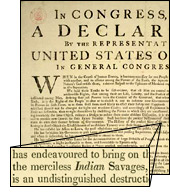

Before the Revolution
Crispus Attucks, the first person killed in the Revolution, had an African father and a Masschuset Indian mother.
Correspondent Firehair adds:
Crispus Attucks' mother was a Natick Indian. "Attucks" in that language means deer; she was of the deer clan. His father was a "mulatto," so whether or not he was African is not known."
The patriots who instigated the "Boston Tea Party" dressed as Indians because Indians represented freedom from tyranny to them.
For a hundred years after our Revolution, Americans credited Native Americans as a source of their democratic institutions. Revolutionary-era cartoonists used images of Indians to represent the colonies against Britain. Virginia's patriot rifle companies wore Indian clothes and moccasins as they fought the redcoats. When colonists took action to oppose unjust authority, as in the Boston Tea Party or the anti-rent protests against Dutch plantations in the Hudson River valley during the 1840's, they chose to dress as Indians, not to blame Indians for the demonstrations but to appropriate a symbol identified with liberty.
James W. Loewen, Lies My Teacher Told Me
Correspondent Thomas Brown echoes this point, saying: "Indians were used throughout the 18th and 19th centuries as symbols of liberty." Firehair adds:
They dressed in Indian clothes for a couple reasons. At the Boston Tea Party (I teach this one in my programs at schools) everyone was accustomed to seeing Indians around town, so seeing a gathering group—they kind of "picked each other up along the way" and headed to the shore—as Indians was no big deal.
Had they seen Sam Adams and his crew (pretty much all members of the Ancient and Honorable Artillery), it would've caused a stir. He was a rabble rouser; where he went, so went trouble. He would've drawn attention—"Hey, there they go, wonder what they are up to now?"
Also, a couple of that group had mixed-blood wives in the family.
More on Indians before the Revolution
The French and Indian War: Indians fought, Washington assassinated
Indians during the Revolution
Indians opposed American independence
Indians and the American Revolution
Nimham's Indian Company of 1778
Death in the Bronx: The Stockbridge Indian Massacre, August, 1778
Authors: Role of Oneidas Forgotten
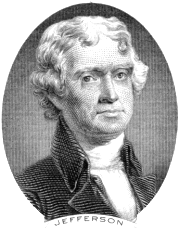
The slave-owning Sage of Monticello
The present King of Great Britain...has excited domestic insurrections amongst us, and has endeavoured to bring on the inhabitants of our frontiers; the merciless Indian Savages, whose known rule of warfare, is an undistinguished destruction of all ages, sexes and conditions.
Thomas Jefferson, Declaration of Independence, July 4, 1776
"There was no room for Indians in Jefferson's empire of liberty," writes Jones. Indeed, Thomas Jefferson himself spoke frankly of what we would today call genocide. "We must leave it to yourself to decide [whether] the end proposed should be their extermination, or their removal," Jefferson once wrote to Clark's older brother, the storied Indian fighter George Rogers Clark. "The same world would scarcely do for them and us."
Jonathan Kirsch, review of William Clark and the Shaping of the West by Landon Y. Jones, Los Angeles Times, 6/6/04
Thomas Jefferson was one of the United States' biggest promoters of the Doctrine of Discovery, Miller said. "He was a devious and conniving character. He was the originator of the Indian Removal Act. We blame Andrew Jackson." But it was Jefferson who deemed Indians "the wild beasts of the forests" and proclaimed that "we will drive them to the Rocky Mountains."
Jodi Rave quoting Robert Miller, Lost History, The Missouian, 4/10/07
Of course, author Loewen says Jefferson's charge against Indians in the Declaration of Independence was false. In Lies Across America, Loewen writes:
The colonials were actually upset with Great Britain for precisely the opposite reason: the British had been "inciting" peace. The Proclamation of 1763 had achieved peace with Native Americans by forbidding colonists from settling west of the Appalachian continental divide. This enraged many colonials.
After the colonials won the war, they declared agreements like the Proclamation null and void because a "prior" government had established them. They felt free to settle in Indian territory. Thus the pattern of broken treaties continued.
One source makes Jefferson's goals seem relatively benign. From an article on Yahoo, 11/22/00:
Virginia's 17th century policy toward its native people set a tone for the nation's treatment of Indians, said Edward D. Ragan, a historian and expert on Native American culture at Syracuse University.
Eradication and land grabs were embraced by Virginians George Washington and Thomas Jefferson when they were president, policies that had their origins in Virginia early in the 17th century.
The Indians called Washington "Conotacarious"—devourer of villages. He ordered the destruction of Indian villages in New York state during the Revolutionary War and warned other tribes he would do the same thing to them if they fought the Americans, Ragan said.
Jefferson sought to peacefully eradicate Indian culture, he said.
"When Thomas Jefferson comes along his policy tends to be to educate children in Christian ways, to reconstruct Indians socially by emphasizing agriculture as a way of confining men to a plot of land instead of hunting and roaming," Ragan said.
Another source condemns Jefferson. From Genocide! by Clyde Grubbs:
When governor of Virginia, Thomas Jefferson stated: "If we are to wage a campaign against these Indians the end proposed should be their extermination, or their removal beyond the lakes of the Illinois River. The same world would scarcely do for them and us." When he became President he had a standing army to wage his campaign of extermination and during his administration many of the nations were eliminated on the Atlantic side of the Eastern Mountains. His administration then waged war against the people indigenous to the "near West" beyond the Appalachians. Then he "bought" the West from France (whose claim to the land was based on the theology of the Christians Crusades (non Christians have no rights a Christian is bound to recognize.)
More on Jefferson
Jefferson sought to remove Indians
"Devious and conniving" Jefferson
Jefferson admired Indians' freedom
"Lewis and Clark were military officers serving American empire....[Their] expedition was primarily concerned with Indian affairs from its inception."
Thomas Jefferson: On Slavery
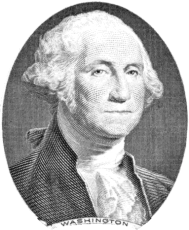
In early 1779, Washington ordered an assault into the heart of Iroquois country to avenge the massacres of soldiers and settlers in Pennsylvania's Wyoming Valley and New York's Cherry Valley a year earlier. Washington's plan called for Sullivan and Clinton to lead expeditions targeting the Finger Lakes villages of the Iroquois -- specifically the Seneca, Cayuga and Onondaga tribes -- who had sided with the British.
The future president of the fledgling United States recommended the Iroquois villages "not be merely overrun, but destroyed."
By the time the three-month campaign ended in the fall of 1779, the more than 4,000 Continental troops in the expedition destroyed dozens of Iroquois towns and villages and more than 150,000 bushels of corn. Thousands of Iroquois sought safety at the British fort at Niagara, where many died during the harsh winter that followed.
Exhibit Examines Effects of 1779 Campaign, Indian Country Today, 11/30/05
After the Americans invaded Iroquois towns in the Susquehanna Valley in 1778, George Washington, determined to exterminate the Indian threat once and for all, ordered a massive sweep of Iroquois country, specifying that it should "not merely be overrun, but destroyed." Following orders by Washington to "lay waste all the settlements," Gen. John Sullivan's men ravaged 40 villages, burned 500 houses, and destroyed 100,000 bushels of corn. Some units stopped to plunder graves for burial goods; others skinned the bodies of dead Iroquois to make leggings.
Like Christopher Columbus, George Washington changed his attitude toward Indians. Washington held positive views of Native Americans early in his life, but after unleashing the Ohio War in 1790 he would come to denounce the Ohio Indians as "having nothing human except the shape."
James W. Loewen, Lies My Teacher Told Me
Loewen also describes how much more central the Indian question was to American history than most people realize:
Our history is full of wars with Native American nations. But not our history books. "For almost two hundred years," notes David Horowitz, "almost continuous warfare raged on the American continent, its conflict more threatening than any the nation was to face again." Indian warfare absorbed 80 percent of the entire federal budget during George Washington's administration and dogged his successors for a century as a major issue and expense.
For more presidential quotes on Indians, see Savage Indians and Uncivilized Indians.
More on Washington
John Hanson, the First President
George Washington and the Indians
George Washington kept slaves in the first White House
Does it matter if Washington was a Christian?
"George Washington and the other founders...very clearly understood that it was an empire they were founding."
Indians cheated out of a state
The story of America's 14th state shows what happened when Native people tried to switch rather than fight. Before Vermont, several little-known candidates vied to join the Union before. Among them were Nova Scotia and the lost state of Franklin.
But Indians came within one signature of having their own state to live in peacefully. The 14th American State, a website compiled by Fred Gray, tells the story of a chief's appearance before Congress:
[W]hen Chief White Eyes of the Lenne Lenape on the Tuscarawas River took the floor on April 23, 1778, he got everyone's undivided attention. For nearly a week, rumors had circulated that his presence would somehow alter the mood of the convention. When Chief White Eyes began to speak, the room went silent. He stood straight and tall, and his voice rang out with authority. His dark, piercing eyes looked squarely into each face, as if daring any man to question his right to be there. Drawing a deep breath, he began:
"I make the proposal that my entire tribe, the Lenne Lenape (Delawares) become the 14th fire. We wish to join the other thirteen fires in your fight with Great Britain. We wish to enter the Union of States as a Christian state, and as an all-Indian state. We want to become a full and equal partner with your thirteen states."
The Americans hailed this offer because they were desperate for military aid from the Delaware. But many of them had invested in Western lands and feared White Eyes's plan might succeed, so they had him assassinated. Once the War of Independence ended, they reneged on the deal:
When the Delawares asked where their state boundaries would be exactly, they were told that a necessary signature had inadvertently been omitted from the statehood document. They were told that no law existed that would allow the signature to be added retroactively. In truth, they had decimated their tribe and spent their resources on behalf of America—and so they were no longer needed. With no excuses or apologies, they were turned away.
The purloined state of Tuscarawas could've—perhaps should've—been our 14th state. It's a good example of how the Indians' fate wasn't inevitable. Other solutions besides extermination or relocation were possible.
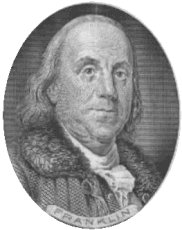
The Constitution, Indian-style
That the Founding Fathers modeled the US Constitution partly on the Iroquois Confederacy is too well-known to document here. But conservatives still try to deny the connection. Compare the following passages:
The Iroquois Indians: I look into this little canard and I discover that the only evidence for this [that Iroquois Indians shaped the Constitution] is a letter from Benjamin Franklin. It turns out that there was something called the "Iroquois League." There were about ten tribes. These Indian tribes were having fratricidal conflict and eventually someone said, "Let's form a league. Let's meet two or three times a year. Let's sort out our differences." It wasn't a success; the Iroquois League fell apart in a few years. Anyway, Benjamin Franklin, very dejected by the argumentative nature of the Philadelphia convention and frustrated by the inability of the people to come together in a union, writes an open letter. He says, look, basically, if a bunch of barbaric Indians can get together and have a league to sort out their differences, why can't we civilized white guys get together and pull together a constitution? This, I kid you not, is the sole basis for arguing that the Iroquois League is the hidden fount of wisdom behind the U.S. Constitution.
Dinesh D'Souza, Racism is Not the Problem: Why Martin Luther King Got It Half Right, address delivered at AIA's 1999 Conservative University at Georgetown University
Hiawatha and Deganwidah founded the League of the Iroquois sometime between A.D. 1000 and 1450 under a constitution they called the Kaianerekowa or Great Law of Peace.
[In Agrarian Justice, Thomas Paine] returned once again to the Iroquois, among whom he had learned democracy, when he wrote, "The fact is, that the condition of millions, in every country in Europe, is far worse than if they had been born before civilization began, or had been born among the Indians of North-America at the present day."
After this taste of Indian diplomacy, Franklin became a lifelong champion of the Indian political structure and advocated its use by the Americans....Speaking to the Albany Congress in 1754, Franklin called on the delegates of the various English colonies to unite and emulate the Iroquois League, a call that was not heeded until the Constitution was written three decades later.
Another student of the Iroquois political organization was Charles Thomson, the perpetual secretary of the Continental Congress. He spent so much energy studying the Indians and their way of life that the Delaware Nation adopted him as a full member. Following Thomas Jefferson's request, Thomson wrote at length on Indian social and political institutions for inclusion in an appendix to Jefferson's Notes on the State of Virginia.
Jack Weatherford, Indian Givers
As with most academic questions, one side of the debate is not likely to sway the other, but there is growing acceptance of the belief that the Iroquois Confederacy and its Great Law played a major role in the birth of American democracy.
"I would say so," said Prof. Bruce E. Johansen of the University of Nebraska-Omaha, who has authored books on the influence theory since he first became aware of it in the 1970s.
Johansen told United Press International he based his conclusion on some 1,300 references to the subject he has collected from newspapers, magazines, books and educational outlines over the past 30 years.
"Based on that I think it's become more acceptable day by day, person by person and inch by inch," Johansen said. "All the reactions are interesting" and some have been outright "nasty."
"Ever since the '70s when I started, it's a lot more acceptable now than earlier. It's been an interesting debate," Johansen said.
.
.
.
Commentator George Will called the influence theory "fiction," conservative politician Patrick Buchanan labeled it "idiocy," and talk-show host Rush Limbaugh called Johansen's intellectual life's work "worse than historical revisionism. It's more than the distortion of facts. It's the elimination of facts."
Historian, conservative author and rejected U.S. Supreme Court nominee Robert H. Bork, in his book, "Slouching Toward Gomorrah: Modern Liberalism and American Decline," labeled the concept "nonsensical." Bork complained that New York State has made it official educational doctrine that the U.S. Constitution was heavily influenced by the political arrangements of the Iroquois Confederacy.
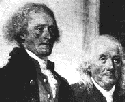
"The official promulgation of this idea was not due to any research that disclosed its truth," Bork wrote. "Nor has any other state adopted this nonsensical idea. New York adopted it because the Iroquois mounted an intensive lobbying campaign directed at the State Department of Education."
Bork called it "a detrimental forcing of a false notion by one culture on another."
In his introduction to "Debating Democracy: Native American Legacy of Freedom," Johansen said Bork's absolute denial "is but one of many examples of the subject's ability to rub raw nerves ... "
"The notion that American Indian political systems have contributed to our present-day notions of these (democratic) concepts has caused intense controversy," Johansen wrote. He said many in the academic world had staked everything on a belief that the Iroquois had nothing to do with the evolution of democracy in America.
Scholars who back the influence theory base their conclusions on the published and unpublished papers of Founding Fathers Benjamin Franklin and Thomas Jefferson, other historical documents, Iroquois oral histories and the Great Law. These researchers say that presents a plausible argument that the Iroquois influenced the ideological birth of the United States.
David D. Haskell, "Feature: Iroquois Law and U.S. Founders," UPI, 6/19/01
Dueling versions of history? Why not? What fun would it be if all the answers were obvious?
But if George Will (Bill Clinton is a rapist), Pat Buchanan (Hitler had admirable qualities), Robert Bork ("original intent"), and Rush Limbaugh (mistakes too numerous to list) all agree on something, I'd say you can be sure it's wrong.
For more on the Indians' contribution to the US Constitution and American-style liberty, see Indians Gave Us Enlightenment.
More on the Iroquois League and the Constitution
Hillary follows Iroquois model
Debating the Constitution's origins
Forgotten Founders (by Bruce E. Johansen)
The Great Seal
The eagle symbolizing the Iroquois Confederacy held six arrows, one for each of the Six Nations. The eagle on the American seal holds 13 arrows, one for each of the 13 original states.
From the US Government's official booklet on the Great Seal, describing the lengthy search for a suitable design:
The Congress still was not satisfied. On June 13, 1782, it presented the collected work and recommendations of the three committees to Charles Thomson, Secretary of Congress. Thomson was not an artist, but he was a practical man with the ability to get things done. He selected the best features of all the previous designs, assigning prominence to the eagle. Feeling that the new nation's symbol should be strictly American, however, Thomson replaced Barton's crested Imperial eagle with the native American bald eagle, wings extending downward as though in flight. He placed in the left talon a bundle of arrows and in the right, the olive branch. Providence.
Note the connection between the seal's design and Thomson's deep familiarity with Indian culture. Most Indian tribes hold the eagle sacred. They don't feel the same about Ben Franklin's choice for a national symbol, the wild turkey.
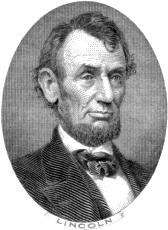
More fun historical facts
The Pagan Roots of Democracy
Honoring the Man Who Led America's First Revolution
"Many key aspects of American history...are rooted in the forgotten Spanish century that preceded English arrival."
Our Founding Fathers Were Not Christians
God of Our Fathers: George F. Will on Moral Minority: Our Skeptical Founding Fathers
WWFFD? Who Cares? Let's stop fussing about what America's founders thought, and let our minds run free
How Lincoln's Army 'Liberated' the Indians
Lincoln's Gettysburg PowerPoint presentation
Our black and Indian presidents
Celebrating the 4th of July
The 4th of You Lie
No hot dogs and cupcakes for Indians
Tribes sell fireworks
If the goal is to commemorate this day, let's commemorate what really happened, not the sanitized version in history books and on parade. In other words, happy 4th of July!
Rob
Related links
Democracy rocks—with Indian help
Indians gave us enlightenment
The Founders' original intent
A shining city on a hill: what Americans believe
Author's forum: multiculturalism
|
. . . |

|
All material © copyright its original owners, except where noted.
Original text and pictures © copyright 2007 by Robert Schmidt.
Copyrighted material is posted under the Fair Use provision of the Copyright Act,
which allows copying for nonprofit educational uses including criticism and commentary.
Comments sent to the publisher become the property of Blue Corn Comics
and may be used in other postings without permission.